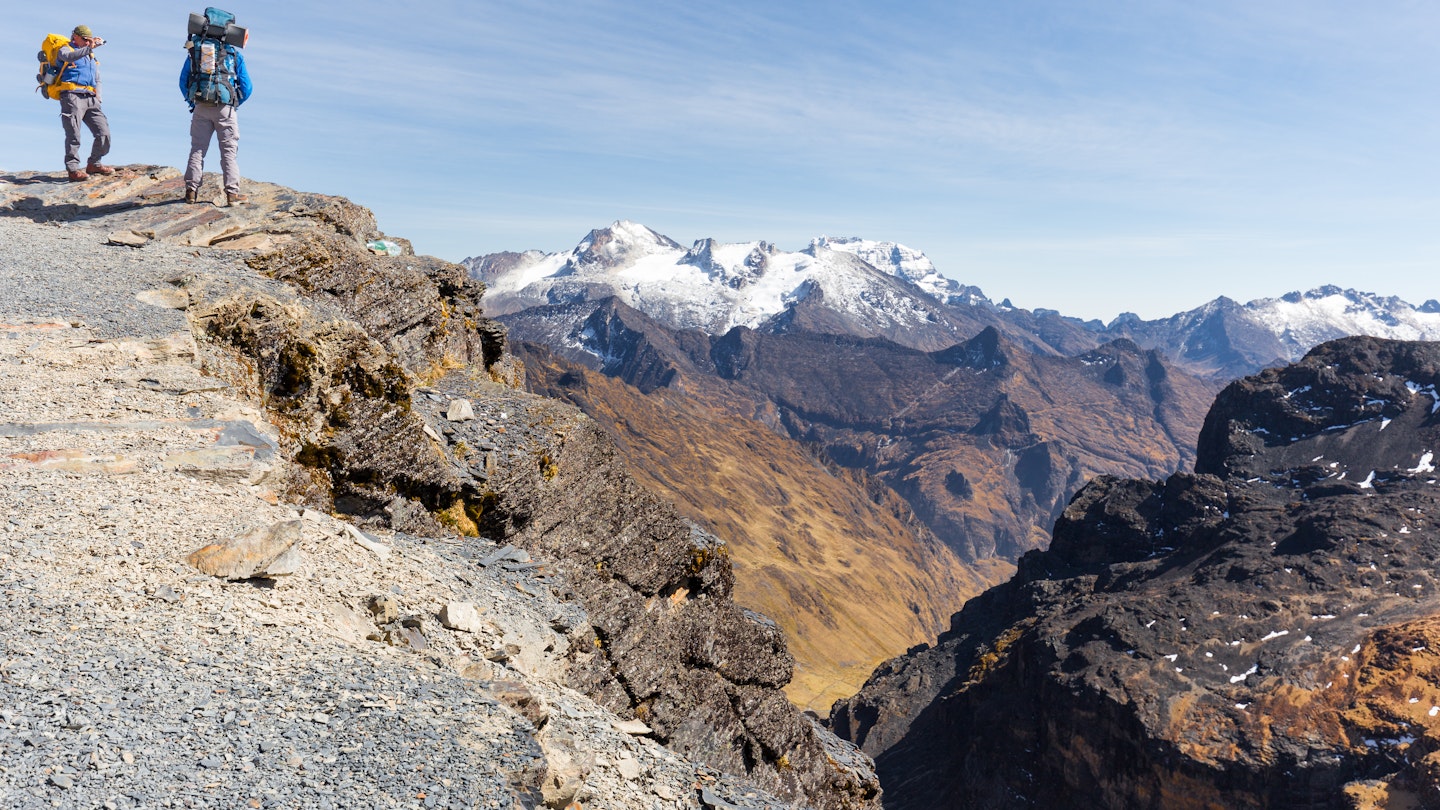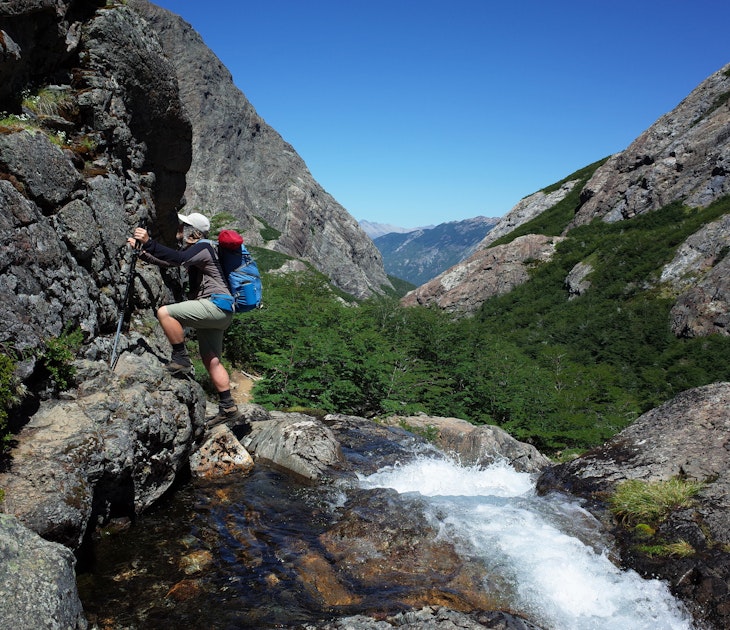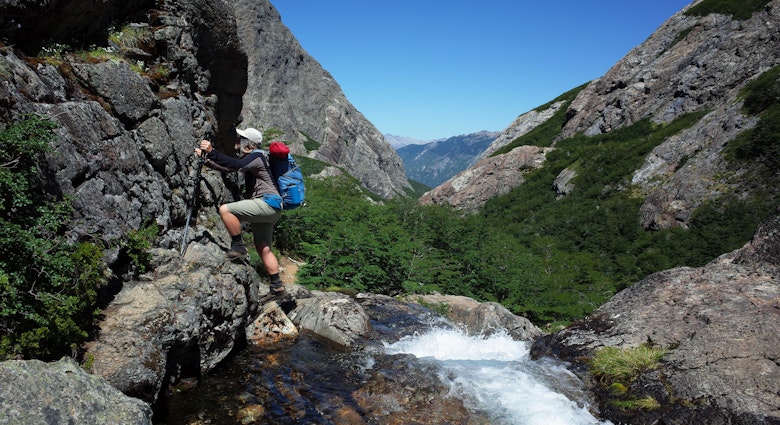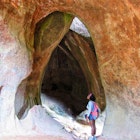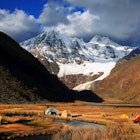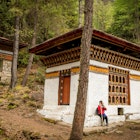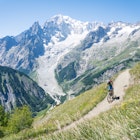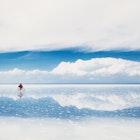Bolivia offers a thrilling variety of landscapes for hikers. Visitors can lace up their boots and take to trails that cut through the white mountains of the Andes, follow surreal rock formations and tracks that lead to caves, and watch the sun rise from one of the deepest canyons in the world.
The country has a number of highly popular hiking routes – among some of the best places to visit in the country – yet it’s not rare to have a trail all to yourself. Here are the seven best hikes to try in Bolivia.
Traverse the Bolivian Inca trail via El Choro
60km (37 miles); 2–3 days; easy/moderate
Practically downhill the entire way, this pre-Hispanic route descends from the very top of La Cumbre into the valley of Los Yungas. Beginning in a landscape of snow-capped mountains at more than 4900m (16,076ft), the trek concludes in a lush rainforest at 1300m (4265 ft). Easy to complete without a guide, the route passes through communities that serve local food, with covered and open-air campgrounds available for overnight stays.
During the hike you’ll encounter hot springs, hanging bridges and traces of pre-Columbian roads to provide historical context for your journey. What’s more, the range of ecosystems make this route a dream for bird-watching. Note that as most of the route is downhill, hiking poles can help ease the load on the knees.

Ascend Huayna Potosí, a difficult climb that’s still suitable for beginners
5km (3.1 miles); 2 days; moderate
The snow-cloaked Huayna Potosí is the most-visited mountain near La Paz. From its summit there are stunning views of ice-blue glaciers, the humps of the Cordillera Real mountains and watery sprawl of Lake Titicaca. Despite a number of steep ascents and unpredictable weather, the trek to the top is considered a non-technical climb, which makes it suitable for beginners. Still, make sure you hire an experienced mountaineering guide.
There are two base camps at which to stay overnight. While neither has many amenities, you’ll find what you need to eat, sleep and keep you warm. In the early hours of the morning on the second day, hikers climb to the peak of the mountain to see the sun rise above the clouds. It's a magical moment. Just be mindful of the altitude.

Torotoro National Park offers canyons, dinosaur footprints and rock art in one journey
33km (20.5 miles); 4 days; easy
Three hours from Cochabamba is the 165,000-sq-km (63,700-sq-mi) Torotoro National Park, Bolivia’s most stunning archaeological site. With a diversity of trails that run from a 4-hour walk up to a four-day adventure, this is a world of rocky valleys, gushing waterfalls, echoing canyons and well-preserved dinosaur footprints – all in an area considered a petrified jungle.
Note that all Torotoro treks require a certified guide. Prices depend on both the length of the trail and the number of travelers in your hiking party. Guides can be booked in either Cochabamba or Torotoro, though there are better deals to be found in the latter.
Hit the Illampu circuit for high passes that will bring you closer to the stars
110km (6.3 miles); 7 days; difficult
One of the top hiking trails in Bolivia departs from the village of Sorata. Along the Illampu circuit, you’ll pass through the massifs of the Cordillera de Los Andes, including the peaks of Ancohuma and Illampu. Note that this hike is a challenging one, with several high passes at an altitude between 4000m (13,325ft) and 5000m (16,404 ft), and night temperatures dropping below -10° C.
On the road you’ll see lagoons, hot springs, condors, llamas and alpacas; there might also be the chance to visit remote valley villages, where the ancient Aymara culture has not changed much over the centuries. This is also a great place for stargazing and getting good shots of the night sky.

Expect a mystical experience just an hour from La Paz at Valle de las Ánimas
7.5km (4.6 miles); 4 hours; moderate
Valle de las Ánimas (Valley of the Souls) takes its name from the towering forest of rock formations that jut up like the departed of this world. Indeed, this special site makes visitors feel like they are in a sacred place. Covering some 25 sq km (9.6 sq mi), the valley has a number of hiking trails, each with a variety of distances and difficulty levels; a moderate 4-hour hike is the most well-trodden. Still, at an altitude of 4000m (13,325ft), even the easiest walk can be challenging.
As well as the impressive rocks, once you reach the valley ridge there are breathtaking views of Illimani, the Cordillera Real’s highest cloud-covered mountain, and the hunched back of Mt Mururata. At the top, take a minute for a conscious breath as you listen to the sound of the wind passing through the rocks. This is a great place to relax, meditate and take a break from the bustle of the city, before heading back down into the action.
Descend into the sixth deepest canyon in the world at Cañón del Pilaya
6km (3.7 miles); 1 hour; easy
Since this little-known and highly underrated hiking trail is almost entirely free of tourists, you’re more likely to encounter roaming jucumari bears and soaring condors than other visitors along the route. The trailhead starts at the small and windy town of Yumasa, a 2-hour private bus ride from Tarija, in the south of the country.
From Yumasa, it’s around an hour’s hike to Cañón del Pilaya, the sixth deepest canyon in the world. On one side are hulking mountains and on the other the river Pilaya, some 3030m (9940ft) below. Hikers can camp here overnight – and we highly recommend catching the sunrise from up high – but with no tourist infrastructure, you will need carry everything you need. Additionally, with no tourist agencies in the region, you will need to line up a guide in Yumasa. Adhemar Muñoz (+591 6767 7119) lives locally and guides visitors to the canyon.
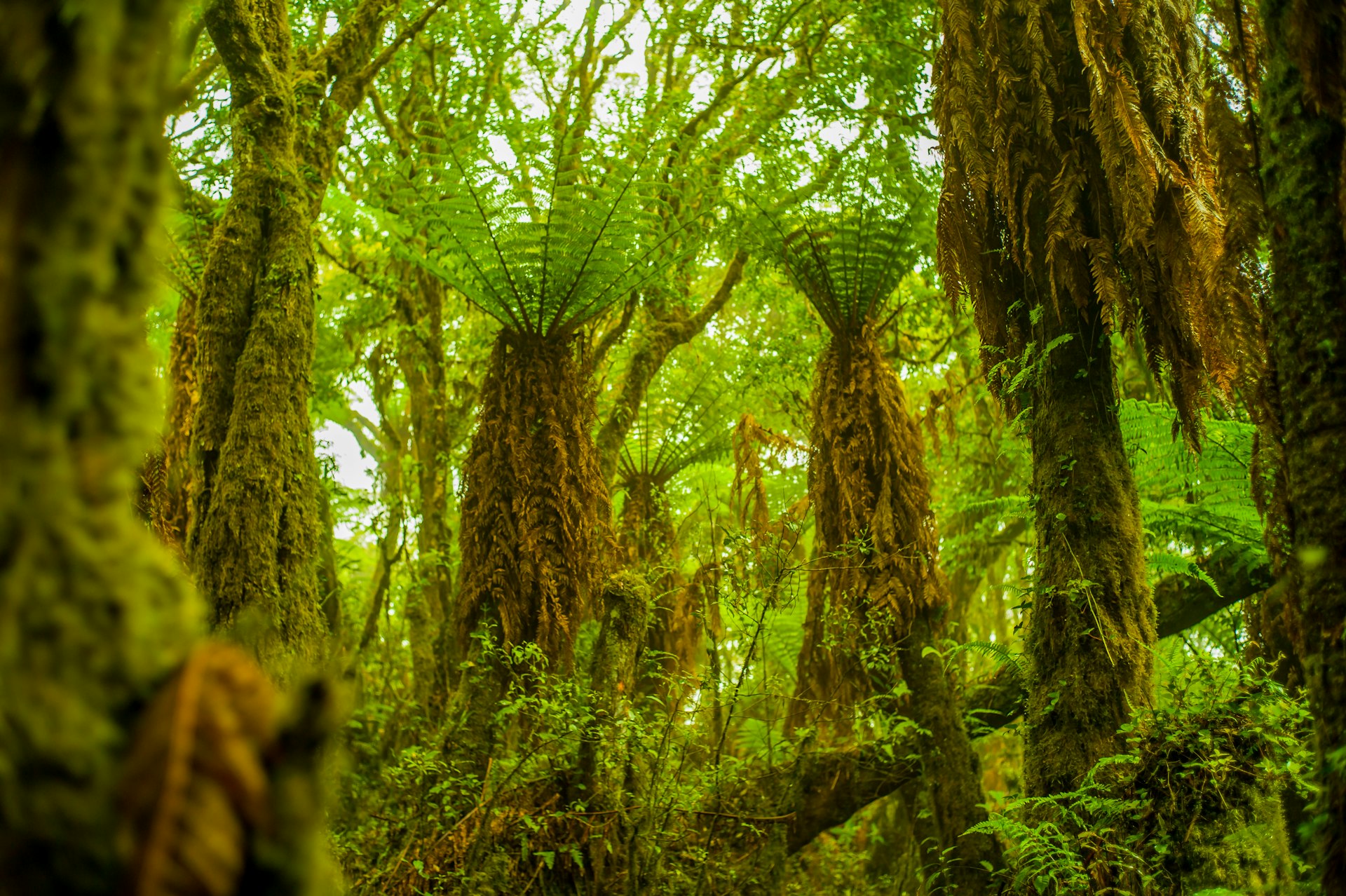
Head to Bosque de los helechos gigantes for giant ferns and mist in a cloudy forest
7km (4.3 miles); 5 hours; moderate
Thirty minutes from the charming town of Samaipata is Amboró National Park, home to giant ferns that can grow to more than 10m (33ft) in height. There are a number of hikes through the park, ranging from 2 hours up to 5 hours. No matter how long you set out for, you can expect to see some 17 varieties of ferns as you move from one viewpoint to another.
At the highest point (2400m; 7874ft) you can take in a view of the dense vegetation where the mist passes through the trees – a magical moment to savor the embrace of nature.
Tips for hiking in Bolivia
Hiking independently in Bolivia can be difficult as many of the country’s hiking trails aren’t well signposted. El Club Andino Boliviano, a mountain activities club in La Paz, is a good place to start researching routes, hiring qualified guides and organizing everything you may need for your trip.
As the Andean zone is high up, make sure you acclimatize properly by spending a few days at altitude before your trek. Once on the trail, take it easy, drink plenty of water, and be sure to stop if you have any symptoms of acute mountain sickness like tiredness, nausea, light-headedness, a fast heart rate, headaches or a shortness of breath. If you have any of these symptoms, descend to a lower altitude right away. Avoiding alcohol when hiking is a good idea, too.
You might also like:
The best time to visit Bolivia for an adventure
Bolivia on a budget: see world-class sights for fewer bolivianos
Everything you need to know before you visit Bolivia

